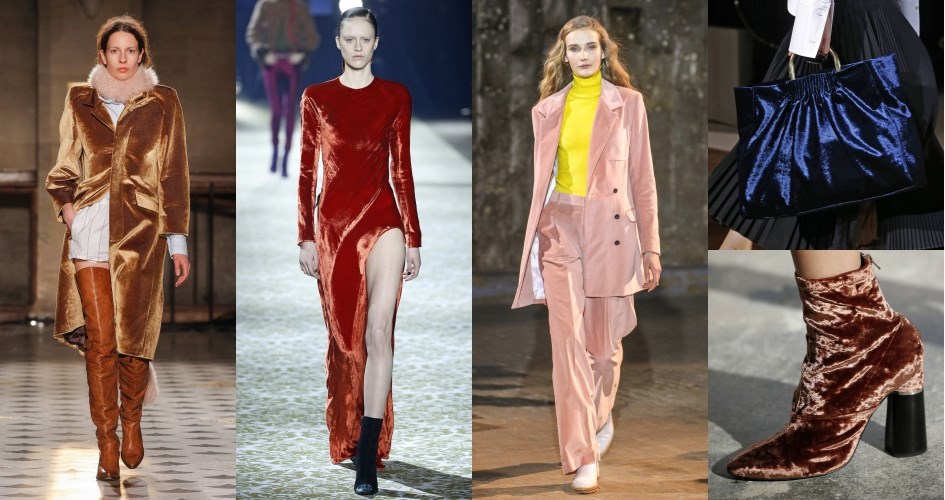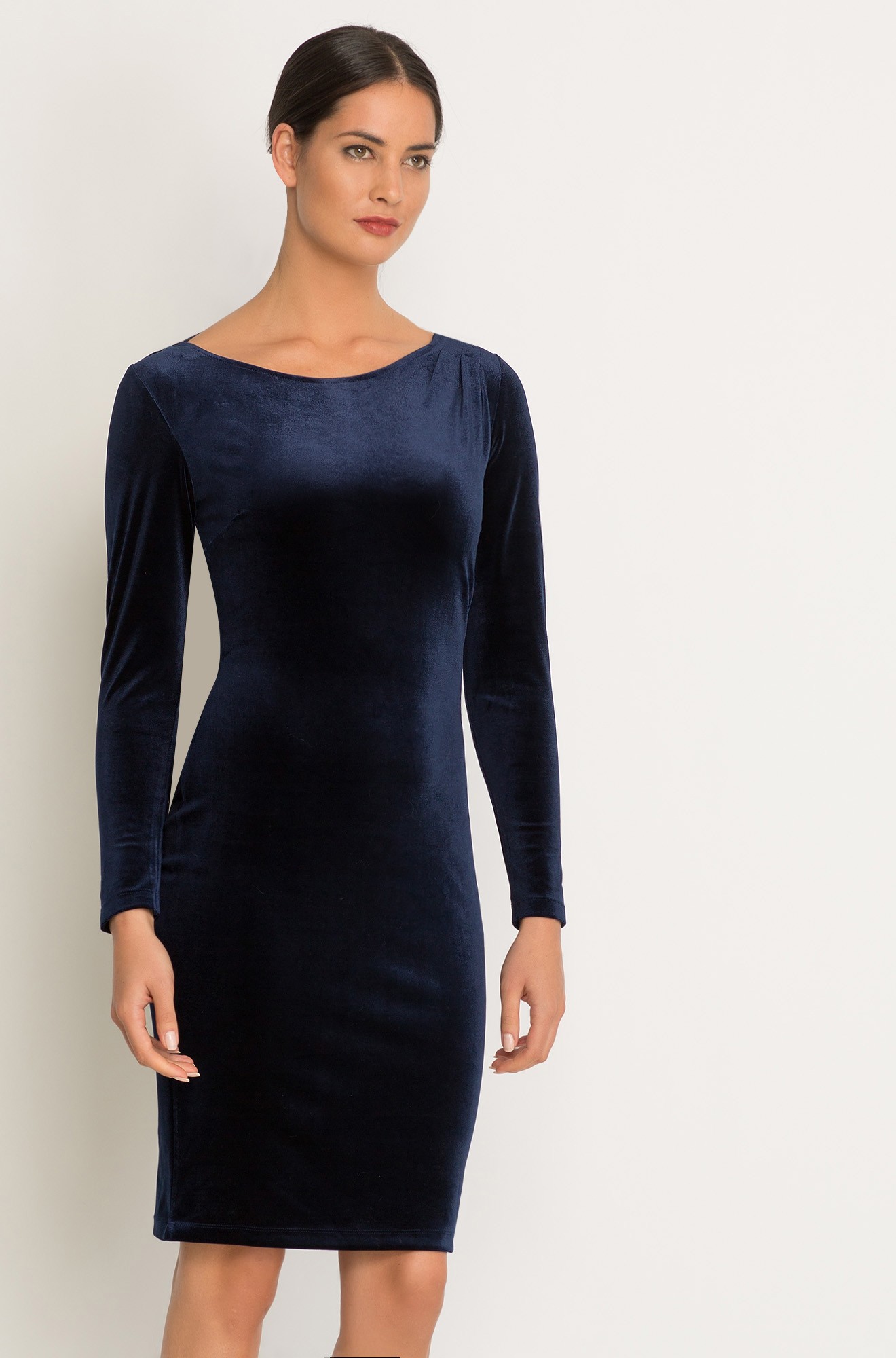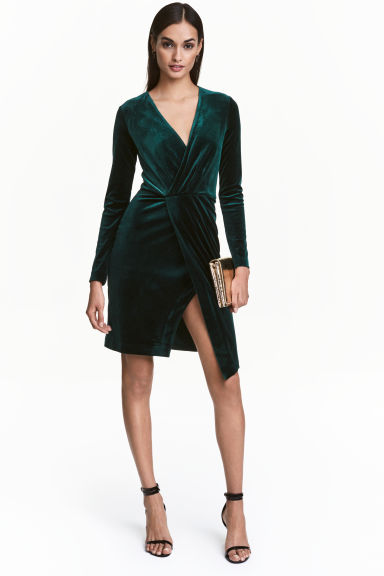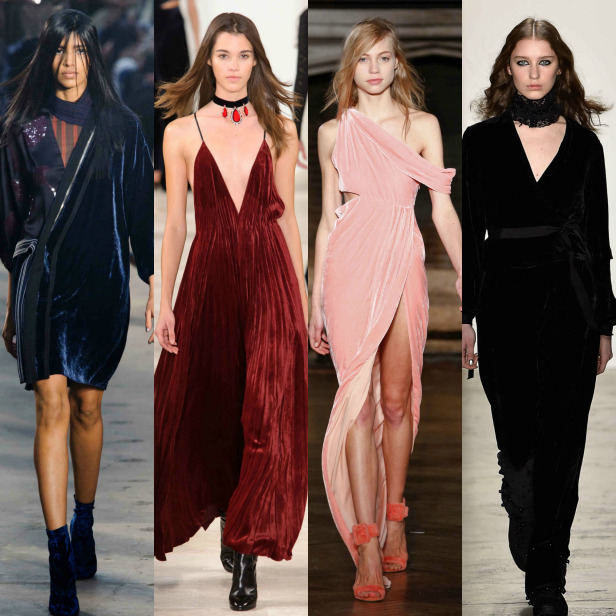Velvet in a new trendy design
Velvet rules the fashion world for the second season. This year, his reign is slightly changed with more trendy monochrome trendy pieces, which are not only for small children, but also for us adults.
History of clothing velvet
Clothing velvet has a rich and fascinating history that dates back to ancient Egypt, where the first traces of its production were found. But its real popularity grew in Italy during the Middle Ages, where the material was considered a symbol of wealth and luxury.
Geographically, the first records of velvet production date back to Asia, where the material was considered luxurious and reserved for royalty. Later, the production of velvet spread to Europe, where it became a symbol of wealth and luxury, especially in Italy. Culturally and historically, velvet is associated with royal nobility and church dignitaries.
With technological advances, the velvet production process has changed significantly over the years, becoming more efficient and accessible. Thanks to this, velvet began to appear more in mainstream fashion. Fashion trends also influenced the use of velvet in different decades, with peaks of popularity in the Victorian era, the 1920s, and the 1970s and 1990s.
Composition of clothing velvet
Clothing velvet is known for its specific texture, which is created by a specific way of weaving.
The velvet fibers are woven into a very tight structure, resulting in its characteristically smooth and soft surface. Depending on the cut and weight, velvet can be thinner and lighter or thicker and heavier, which affects its use in different types of clothing.
Traditional velvet was made from silk, but today it is made from a variety of materials including cotton , viscose , nylon and polyester. Dyes used on velvet can be natural or synthetic, and can be applied either before or after weaving
What types of velvet do we have?
Velvet has many forms: cotton velvet , niky velor , velor de panne , but also elastic velvets , which are a fashion hit this year. Elastic clothing velvets stand out for their extraordinary softness, soft and pleasant texture, which beautifully outline the figure and add flair. Although clothing velvets used to be mainly used for children's and recreational clothes, but that is over!!!
How to combine velvet
This year, he wishes for unconventional combinations of velvet with sequins , which will create an elegant and original piece, as well as an evening dress. Cocktail dresses, classic suits, and tunics with leggings that you won't want to take off can also be interestingly designed.
Clothing velvet is a luxurious and richly textured material that combines well with different types of fabrics and materials. Combining velvet with other fabrics can lead to interesting and stylish results.
Velvet is available in a wide range of colors and shades, which allows it to be combined with many other materials. Combining velvet with soft and shiny materials such as satin or silk is very popular. This combination creates an interesting contrast between matte and glossy textures. Velvet also contrasts beautifully with rough materials such as denim or tweed, where velvet details can add a sense of luxury and sophistication.
Clothing velvet is often used in various types of clothing and accessories. Its rich texture and sheen make this material ideal for layering in the colder months. Velvet is often used for details such as collars, cuffs or pockets on coats and jackets. Velvet applications on garments made from other materials can add depth and interest to a design. Velvet is also commonly used for decorative elements such as ribbons, bows or lace.
How to work and care for clothing velvet
When sewing with garment velvet, it is important to use the right tools. Because of its rich texture and glossy finish, sharp needles with a very fine point are often preferred to avoid damaging the fabric. The threads should be strong, but also soft, so that there are no unpleasant marks on the velvet surface. As for sewing machines, they are recommended with the option of setting a longer stitch, which helps when handling heavier velvet fabric.
Velvet is a fairly heavy and slippery fabric, which can cause cutting and sewing challenges. It is important to use sharp scissors for precise cuts and strong pins to hold the fabric in place. When sewing, it is important to leave enough margin for the seams, because velvet tends to "shift". Gluing is not usually recommended for velvet as the glue can leave visible marks on the surface of the fabric.
- Washing velvet
Clothing velvet requires specific care when washing. It is ideal to wash the velvet by hand or in the gentle mode of the washing machine at a low temperature. Detergents that are too strong can damage the luster of velvet, so it is important to use a mild detergent designed for delicate fabrics.
- Ironing velvet
Ironing velvet can be a bit more difficult as direct contact with a hot iron can damage its texture and appearance. It is recommended to iron the velvet from the wrong side, at a low temperature and if possible without using steam. If necessary, a special pad designed for ironing velvet can also be used.
- Velvet drying
Velvet should be dried naturally, ideally laid horizontally to preserve its structure and prevent the formation of unnatural folds. Velvet should not be dried in direct sunlight, which could fade its color. The dryer is not suitable for velvet, as high temperatures and intensive movements can damage the fabric.
- Velvet storage
When it comes to storing clothing velvet , it is important to keep the fabric in a dry and well-ventilated environment to avoid mold or moths that could damage the material. It is also a good idea to clean the fabric before storage to remove any dirt that could cause long-term damage. When storing, it is advisable to fold the velvet instead of hanging it on a hanger to prevent the formation of unpleasant folds.
What to sew from clothing velvet
Velvet Bells
Velvet bell bottoms are completely unique and elegant pieces of clothing that will completely change your outfit. Thanks to their velvet surface, they are comfortable and stylish at the same time. The second popular material for making trousers is often denim . Jeans are popular for their durability and versatility, but they don't have the luxurious texture that velvet offers.
Velvet cocktail dress
Velvet cocktail dresses are the perfect expression of elegance and sophistication. They are ideal for evening events and parties where you want to stand out. As an alternative, chiffon can be used, which is light and airy but does not have the same rich texture as velvet.
Velvet jacket
A velvet jacket will add instant luxury to your outfit. It is ideal for formal events or evening events. Wool is also a common material for making a jacket, thanks to its thermoregulatory properties and classic look. However, compared to velvet, wool does not have the same luster and smoothness.
Velvet bedspread
The velvet throw is sophisticated and warm, perfect for chilly evenings. Polyester fabrics are also popular for making bedspreads due to their resistance to moisture and ease of maintenance. But compared to velvet, polyester doesn't have the same rich and tactile finish.
Velvet evening dress
Velvet evening dresses are a symbol of elegance and sophistication. Their rich and shiny appearance brings a unique style to any evening event. Alternatively, silk dresses are also popular for their softness and lightness, but velvet dresses provide that unique depth and texture that is truly special.
Velvet tuxedo
The velvet tuxedo represents a new level of formal elegance. Its unique texture and shine add an extra layer of luxury to the classic tuxedo style. On the other hand, tuxedos often use materials like wool or polyester for their durability and ease of maintenance. But none of them can really compete with velvet when it comes to the expression of luxury and style.
Velvet tailcoat
A velvet tailcoat is the true pinnacle of elegance. Its rich and deep look is perfect for formal and evening events. Although wool is an often used material for tailcoats for its classic look and thermo-regulating properties, velvet offers the highest level of sophistication and style.
Which velvet piece will you buy? A little inspiration in the gallery.




This online store stores cookies that help it function properly. By using our services, you agree to their use.